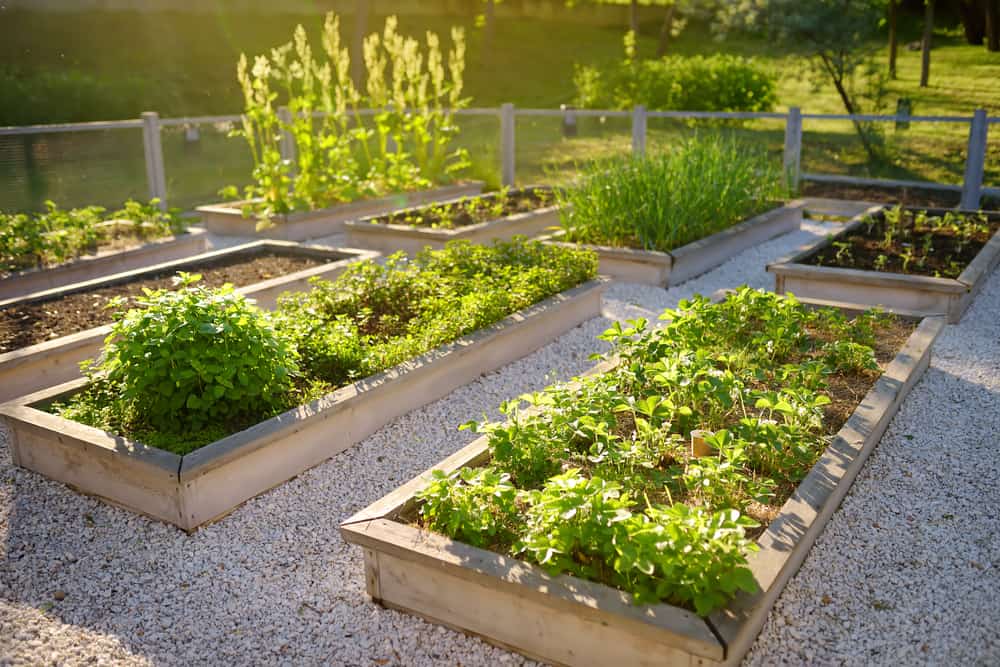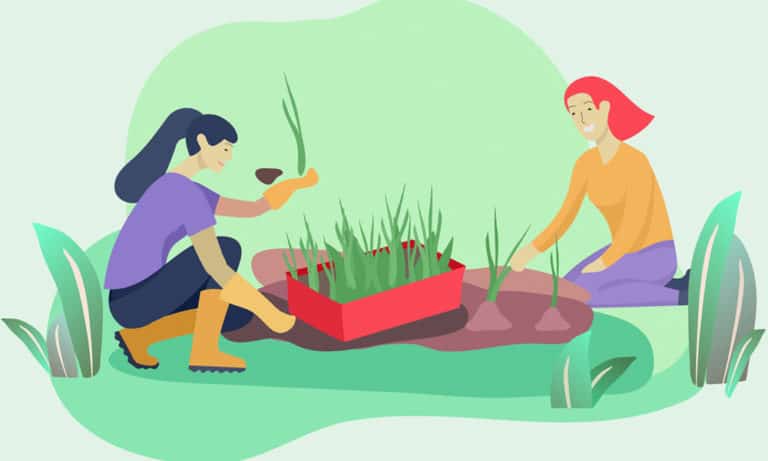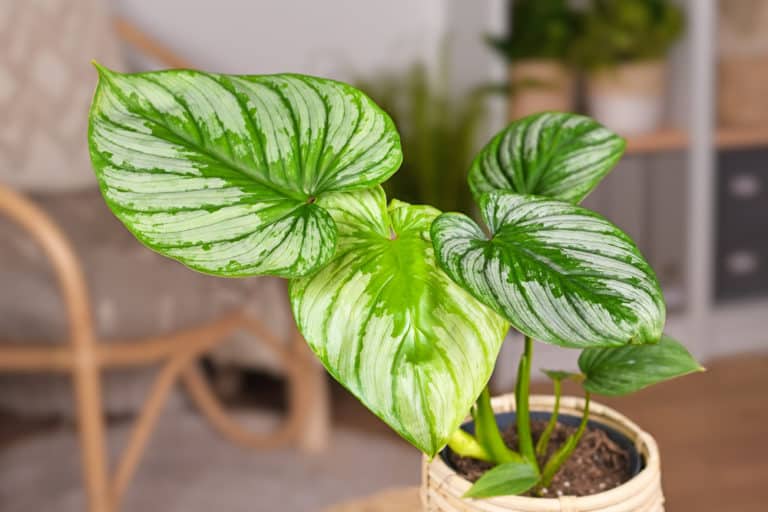Community Garden Statistics in 2024 (Latest U.S. Data)

Community gardens work wonders by bringing people together and improving community wellbeing.
Community garden statistics show that public gardens have a positive economic benefit on local neighborhoods.
Community Garden Statistics
Highlights of statistics on community gardening:
- Community gardens increase surrounding property values by up to 9.4%.
- Average community garden yields about 20.4 servings of fresh produce per 11 sq. ft.
- Community gardens can lower household food security concerns by up to 90%.
- Every $1 invested in a community garden yields around $6 worth of produce.
- Community gardens have a positive impact on neighborhood security.
- There are over 29,000 community gardens in the 100 largest U.S. cities.
- Community gardeners eat 37.5% more fruits and vegetables than non-gardeners.
- Common reasons for garden participation are access to fresh foods, health benefits, and to enjoy nature.
- Women community gardeners are 46% less likely to be overweight than their neighbors.
1. Community gardens increase surrounding property values by up to 9.4%.
Urban greenspaces have been linked to enhanced property values and fewer vacant homes.
According to research on community gardening statistics, property values within 1000 feet of urban community gardens were found to increase by as much as 9.4%. (1)
| Community Garden | Property Values | Time Period |
| 1,000 ft. Radius | 9.4% Increase | 5 Years |
The positive increase in value occurred within five years of the establishment of community gardens in the area.
The study estimated that the cumulative benefits were approximately $2 million in property value increase per public garden. (1)
Through the years, there have been several studies assessing the impact between local community gardens and property values.
| Year of the Study | Distance From a Community Garden | Property Value Increase |
| 1992 | 1,500 ft. to open spaces | 1.43% Increase in sale prices |
| 1999 | 600 ft. to aesthetic parks | 11% Increase in sales prices |
| 2003 | Three-block radius to community gardens | $8,800 in tax revenue through real estate value increase |
| 2003 | Adjacent to high-quality parks | 8-30% increase in the value |
| 2008 | Adjacent to community gardens | Median rent increased by $91 |
| 2012 | Adjacent to community gardens | Increase by up to 30% |
The overall theme of the studies shows that proximity to high-quality outdoor spaces, like neighborhood gardens, has a positive effect on surrounding property values.
The value increase comes through a property price increase, rent increase, or tax revenue.
2. Average community garden yields about 20.4 servings of fresh produce per sq.m.
Some of the best benefits of community gardens are nutritious food products and food budget savings.
The production potential of a community garden will depend on many factors like the length of the growing season, the size of the plot, and the type of produce.
According to a community gardens statistics study from Guelph, Ontario, the average yield for 50 community gardens was 3.15 lbs (1.43 kg) per sq.m (11 sq. ft). (1)
| Average Yield | Community Gardens | Average Yield |
| 3.15 lbs 11 sq.ft. | 50 gardens | 20.4 servings 11 sq.ft. |
This is approximately 20.4 servings of fresh produce per 11 sq. ft. (sq.m) over the growing season.
The study estimated that 434,310 lbs (197,000 kg) of vegetables were produced by using approximately 34 acres (13.76 ha) of land. (1)
The volume would be sufficient to provide enough food to 2,900 people. This neighborhood gardening data shows how economically efficient community gardens can be.
We can just imagine what kind of impact this could have if there were more community gardening programs in our cities.
3. Community gardens can lower household food security concerns by up to 90%.
It’s clear that participating in a community garden has a positive effect on reducing household food budget costs.
According to community garden benefits statistics study from Oregon, concerns about food security dropped from 31% of households to 3% of households after participation in local community gardens. (2)
| Food Security Concerns Before | Impact of Community Gardens | Food Security Concerns After |
| 31.2% of Households | 90% Change | 3.1% of Households |
Before the gardening season, 31.2% of families were worried sometimes or frequently that food would run out before the money.
After the gardening season, the number of concerned households dropped to 3.1%; this is a whopping 90% change in food security concerns.
Analysis of the community vegetable gardens study also uncovered economic and family health benefits because the family often worked together. (2)
The study concluded that community garden projects could reduce food insecurity concerns, improve dietary intake and strengthen family relationships.
4. Every $1 invested in a community garden yields around $6 worth of produce.
The economic benefits of community gardens are measurable and mainly localized.
According to the United States Department of Agriculture (USDA) research, every dollar invested in a community garden yields approximately $6 worth of produce. (3)
| Return on Investment | Participation | Community Gardens |
| 6x ROI | 200,000 Gardeners | 800 Acres |
This is a fantastic 6x return on investment on community gardens in urban areas.
The primary purpose of the research was to assist community gardens in low-income neighborhoods in growing and preserving vegetables to improve nutrition and food security. (4)
The local gardening research included almost 200,000 gardeners who were producing vegetables on 800 acres of “farmland” in 23 major cities in the U.S.
5. Community gardens have a positive impact on neighborhood security.
According to community garden crime statistics research, community gardens have been found to positively impact neighborhood security. (1)
This is achieved by providing safe spaces which are invested in and valued by the community.
Below is an example of the findings of studies evaluating the impacts of community gardens on crime.
| Year of the Study | Description | Impact on Crime |
| 1994 | Impact of Victoria Hills community garden on police incidents | Incidents dropped by 30% and 56% year after |
| 2004 | Relationship between crime and greenspace | Higher levels of greenspace support reduced criminal activity and safer communities |
| 2009 | Impacts of 11 community gardens on reported crimes | Reduction in drug activity and dumping increased resilience against crime |
| 2011 | Vacant lot greening effect on crime, safety, and disorder | Net reduction in perception of disorder |
| 2011 | Comparing crime rates between vacant lots and community gardens | Statistically significant decrease in burglaries, robberies, and felony assaults |
| 2012 | Three community gardens in Kitchener, Ontario | Gardeners fostered a sense of security by increasing interaction across divides |
Although the findings present mixed evidence of a correlation between community gardens and crime prevention, the results collectively present evidence that building community gardens does support residents’ perceptions of neighborhood safety.
Another systematic review on the relationships between greenspaces and crime found that 19 studies reported positive impacts on neighborhood safety, while 9 showed a negative relationship. (1)
The difference is believed to be the result of differences in neighborhood socioeconomic characteristics, types of greenspaces, and types of crimes.
6. There are over 29,000 community gardens in the 100 largest U.S. cities.
According to Trust for Public Land neighborhood gardening statistics, there are over 29,000 community garden plots in city parks in the 100 largest U.S. cities. (5)
| U.S. Community Gardens | Growth | U.S. Community Gardens |
| 29,000 in 2018 | 44% Increase | 16,240 in 2012 |
Trust for Public Land started keeping track of the U.S. organic community gardens in 2012. Since then, the number of public community gardens has surged 44% to 29,000. (5)
Community gardens improve access to local nutritious foods and cultivate social connections via community building.
According to a gardening community study in Denver, gardeners value the social connections they experience in community gardens. (6)
The connections are established through the administrative activities and sharing of tools and vegetables.
Community gardens played also an important role during the Covid pandemic, to improve mental health and provide support during the isolation.
7. Community gardeners eat 37.5% more fruits and vegetables than non-gardeners.
It’s no secret that fruit and vegetables are essential components of a healthy diet and the easiest modifiable risk factors to chronic diseases. (7)
Unfortunately, only a small amount of the world’s population follows the national recommended daily guidelines.
According to community vegetable gardens statistics research, community garden participation is significantly associated with fruit and vegetable intake. (7)
Community gardeners consume fruits and vegetables 5.7 times per day, compared to non-gardeners 3.9 times per day.
| Community Gardeners Fruit & Veg. Intake | Home Gardeners Fruit & Veg. Intake | Non-Gardeners Fruit & Veg. Intake |
| 5.7 times per day | 4.6 times per day | 3.9 times per day |
Community gardeners eat 21.4% more fruits and vegetables than home gardeners and 37.5% more than non-gardeners.
The data also showed that 56% of community gardeners meet national recommendations to consume fruits and vegetables at least 5 times per day. (7)
While only 37% of home gardeners and 25% of non-gardeners meet the national recommendations.
There are also indirect benefits of community gardening participation.
Studies have found that community gardening household members consume fruits and vegetables 1.4 times more per day than those who do not participate. (8)
They also were 3.5 times more likely to consume fruit and veggies at least 5x per day as guided by national recommendations.
8. Common reasons for garden participation are access to fresh foods, health benefits, and to enjoy nature.
According to New York statistics on community garden benefits, the most commonly expressed reasons for participating in community gardens are access to fresh foods, health benefits, and to enjoy nature. (9)
The purpose of the community garden benefits research was to identify the characteristics that are useful to facilitate neighborhood development and health promotion.
The research also found that community gardens located in low-income neighborhoods were 4x more likely to lead to other neighborhood issues being addressed.
Studies also show that community garden programs strengthen communities. (10)
- They provide open spaces for community gatherings and family events.
- They integrate neighbors of different ages, races, and ethnic backgrounds.
- They include lower-income citizens and offer food security.
- They enable gardeners to sell their produce through a local farmer’s market.
- They offer educational opportunities for adults and for children.
- They offer a method to encourage a donation of surplus produce.
9. Women community gardeners are 46% less likely to be overweight than their neighbors.
The health benefits of community gardening are real and measurable.
According to community garden diet statistics, women gardeners are 46% less likely to be overweight or obese than are their female neighbors. (11)
While men gardeners are 62% less likely to be overweight or obese than their male neighbors.
| Women Gardeners | To Non-Gardeners | Men Gardeners | To Non-Gardeners |
| -1.84 BMI | 11 lb difference | -2.36 BMI | 16 lb difference |
The study found large, significant differences in the body mass index (BMI) and overweight and obesity risk when comparing community gardeners to their local neighbors. (11)
The BMI difference for women gardeners vs. their neighbors was -1.84, and the difference for men gardeners vs. their neighbors was -2.36. In terms of BMI, these are notable differences.
These results translate to around 11 lbs difference for a 5 feet, 5 inches tall woman and about 16 lbs difference for a 5 feet, 10 inches tall man.
The study found that community gardeners have lower BMIs than their neighbors.
References
- Susie Cochran, Leia Minaker, University of Waterloo. 2020. The Value in Community Gardens: A Return on Investment Analysis. Link
- Carney PA, Hamada JL, Rdesinski R, et al. Impact of a community gardening project on vegetable intake, food security and family relationships: a community-based participatory research study. J Community Health. 2012;37(4):874-881. Link
- Anne C. Bellows, PhD Rutgers, The State University of New Jersey; Katherine Brown, PhD Southside Community Land Trust; Jac Smit, MCP The Urban Agriculture Network. 2022. Health Benefits of Urban Agriculture. Link
- H. Patricia Hynes and Genevieve Howe, Boston University School of Public Health. 2002. Urban Horticulture in the Contemporary United States: Personal and Community Benefits. Link
- Trust for Public Land. 2018. Here’s the dirt on park trends: community gardens are growing. Link
- Columbia University Mailman School of Public Health. 2021. The Role of Community Gardens During the COVID-19 Pandemic. Link
- Jill S. Litt, Mah-J. Soobader, Mark S. Turbin, James W. Hale, Michael Buchenau, and Julie A. Marshall, 2011: The Influence of Social Involvement, Neighborhood Aesthetics, and Community Garden Participation on Fruit and Vegetable Consumption. Link
- NC State Extension. 2022. Research & Benefits of Community Gardens. Link
- Donna Armstrong, University at Albany SUNY, Department of Epidemiology. 2000. A survey of community gardens in upstate New York: Implications for health promotion and community development. Link
- CivicWell. 2013. Cultivating Community Gardens. Link
- Zick CD, Smith KR, Kowaleski-Jones L, Uno C, Merrill BJ. Harvesting more than vegetables: the potential weight control benefits of community gardening. Am J Public Health. 2013;103(6):1110-1115. Link






